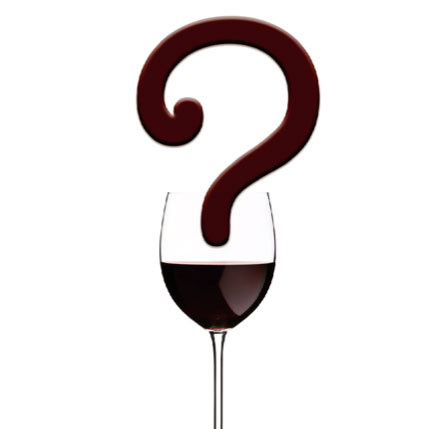Thoughts for Underripe Red Grapes
Q: I grow some Syrah grapes in our vineyard here in Oregon and this year we had an issue of getting ripeness. If this happens to me again, I want to try to be prepared . . . I assume it’s possible to make a rosé from Syrah, right? How long on the skins should I leave it to get a good pink color? Also, is everything else the same as in red winemaking or is there a lot to do that’s different? Thanks for helping me prepare for upcoming challenging harvests!
— Jim Masters • Salem, Oregon
A: I don’t know how many cases of rosé wine are consumed in the United States each year, but I know it’s a heck of a lot. Pooh-poohed in the past as cheap plonk, pink rosé wines, especially those made from good grape varieties like Syrah, can be a “gateway wine” for those new to drinking wine. Folks may start with the sweet pink stuff but as their taste buds mature, they start to gravitate towards other, more refined products. A person who used to only drink margaritas and piña coladas is suddenly a wine drinker. And pink wine isn’t just seen as “real wine with training wheels” anymore. Indeed, it could be argued that rosé consumption in the U.S. has never been higher as big retailers like Total Wine & More! and Costco all seem to have a very large rosé section these days full of some really engaging “serious” wines.
Part of the allure of rosé wine (it carries the fancy French accent over the “e” to distinguish it as different from the flower) is that it’s crisp, refreshing, and easy to drink. There’s something about a pink beverage that kicks eons of wine myths to the curb and it becomes fun rather than stuffy and casual rather than strait-laced. For those who are fans of the drier Provençal style of rosé, it can also be a wonderfully versatile food wine.

So aside from skin contact time, is making a rosé Syrah the same as making a red Syrah? The short answer is, “No way, rosé.” Just about every winemaking decision for a rosé made from Syrah (lightly colored, refreshing, lighter in alcohol, slightly sweet) is the opposite of what should be done when making a rich red wine. Think of it like pressing, making, and finishing a white wine (and not a red wine), and you’ll be steered right every time.
Here are my best tips to produce a quality rosé from a grape like Syrah:
Pick grapes for rosé earlier than you normally would for a red wine: You want lower alcohol and more acid in your pink wine, so target Brix levels between 21–23.5. I look for pHs around 3.2–3.3.
Press before fermentation, not after: Depending on how dark you want your color, increase or decrease skin contact time. One of the easiest ways for a home winemaker to make pink wine is to literally tread on the grapes with your feet in your picking container or containers (assuming it’s watertight) and letting the grapes sit for a little while. Monitor the color of the juice released until it’s to your liking, then press immediately. Keep in mind that you’ll lose a shade or two of hue during the fermentation and aging process, so skew a teeny bit darker than you think you’ll want, especially if making a pink wine with a poor-color varietal like Pinot Noir. Your Syrah should give you plenty of color quite quickly so do watch carefully. You may be happy with the color after only 1–2 hours of skin contact time!
Adjust acid as necessary: Adjustto a lower pH level below that of a red wine. Don’t be afraid to add tartaric acid to get that pH down and the TA up. You want every mouthful to be refreshing and acid will help you get there. I like to see a TA between 6.5–8.5 g/L.
Choose a yeast to maximize fruity aromas: I like the RC212 yeast strain for rosé, but other popular choices include BA11 and 71B.
Ferment cool/cold: As opposed to a red wine fermentation, where you want temperatures high (up to 90 °F/32 °C) to help you extract color and tannin from the skins, here your goal is to preserve aroma and crispness. I like to ferment between 57–62 °F (14–17 °C) if possible.
Arrest the fermentation (or add sugar later): Most folks like a little residual sugar in this wine, typically 0.3–3%, depending on your tastes. Many rosés are perceptibly sweet, though I like mine a little drier. This can be achieved by arresting the fermentation through chilling prior to completion, along with an SO2 addition, and then a filtration step. Though for home winemakers it’s easier and more foolproof to add sugar before bottling. More on that later.
Don’t allow malolactic fermentation (MLF) to occur: You want to keep acid, not lose it, remember? Also, when I’ve had rosés going through any kind of MLF, I experienced color that went from a pinky-purple (a hallmark of Syrah rosé) to pinky-orange. Adjust free SO2 to around 30 ppm immediately after primary fermentation to retard MLF.
Heat and cold stabilize: Just like a white wine, rosé looks best when it’s sparklingly clear with no sediments. I always recommend adding bentonite for protein stability and then doing what you can to cold stabilize.
Adjust residual sugar (RS) if needed: As noted in the “arrest the fermentation” section, a little RS is often desired. I like mine drier so I tend to go for around 0.5–0.75%, while others like 3% or more. It’s easier for home winemakers to add sugar later, right before bottling (but sterile filter first!) rather than attempting to stop the fermentation right at that perfect balance point. Adding table sugar for backsweetening is fine, but white grape concentrate should be considered to add a little extra grape kick.
Sterile filter: You’ll want to sterile filter here because of the residual sugar. With dry red wines, sterile filtration is not necessary.
Bottle with elevated free SO2: To preserve the color and freshness over time, be sure to bottle rosés with free SO2 of at least 30 ppm.
Drink within a year: While well-made red Syrahs can age for years and possibly decades, pink rosés of Syrah wines (and most rosé wines in general) have a shorter, more ephemeral shelf life. But if the pH is low, free SO2 is up, and the wine is sterile filtered, the life expectancy definitely can be extended some.
I make about 60 gallons (227 L) of Sangiovese with fantastic grapes from a neighbor’s vineyard near Ukiah, CAlifornia. Primary fermentation takes 6–7 days to reach 0 °Brix. Then I press it and rack/transfer into glass carboys.


